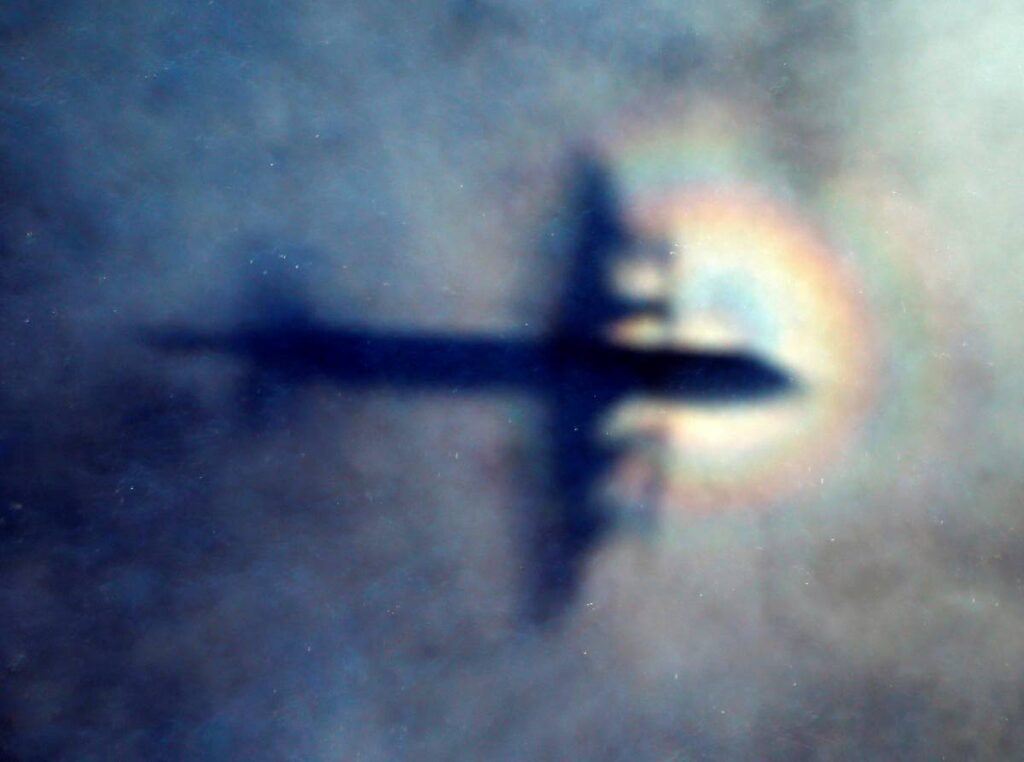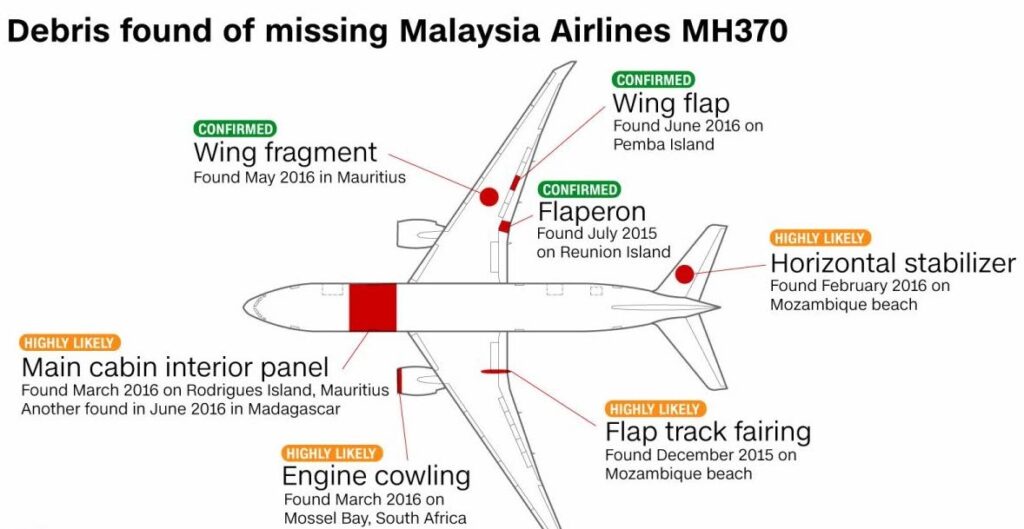Mystery of Flight MH 370

March 10 marked the tenth anniversary of the mysterious disappearance of Malaysian Airlines Flight MH370, operated by a Boeing 777 aircraft with 12 Malaysian crew members and 227 passengers of 14 different nationalities on board.
Flight MH370 took off from Kuala Lumpur International Airport at 12.42 am local time en route to Beijing Capital International Airport, with a scheduled arrival time of 6.30 am local time.
At 1.19 am, while Flight MH370 was over the South China Sea, Malaysian Air Traffic Control (ATC) instructed Flight MH370 to contact Vietnam ATC.
The final voice contact from Flight MH370 was made when its captain replied, "Good night. Malaysian Three Seven Zero."
Two minutes later, the aircraft's ATC transponder stopped functioning, causing it to disappear from Malaysian ATC's secondary radar. Malaysian military radar continued to track the aircraft as it turned left, crossed the Malay Peninsula near the Malaysia-Thailand border, and travelled over the Andaman Sea.
At 2.22 am, the aircraft disappeared from Malaysian military radar, 200 nautical miles northwest of Penang.
At 2.25 am, the aircraft's satellite datalink, which was lost sometime between 01.07 am and 02.03 am, was re-established. Thereafter, the aircraft's satellite data unit (SDU) replied to automated status requests between 03.41 am and 08.10 am, and two unanswered ground-to-aircraft telephone calls.
At 08.19 am, the SDU sent a log-on request message to establish a satellite datalink, followed by the final transmission from Flight MH370 eight seconds later.
Investigators believe the 08.19 am messages were sent between the time of fuel exhaustion and the time the aircraft entered the ocean.
After four hours of communication among several ATC centres, the Kuala Lumpur Aeronautical Rescue Co-ordination Centre was activated at 6.32 am.
At 07.24 am, Malaysia Airlines released a press statement saying contact with Flight MH370 had been lost.
The disappearance of Flight MH370 with all 227 passengers and 12 crew was the deadliest accident involving a Boeing 777 and the deadliest in Malaysia Airlines' history until it was surpassed by Flight MH17, which was shot down over Ukraine on July 17, 2014, killing all 238 passengers and 15 crew members.

Graphic courtesy Ramesh Lutchmedial -
The search for the missing plane became the most expensive search in the history of aviation. It focused initially on the South China Sea and Andaman Sea, before a novel analysis of the aircraft's automated communications with an Inmarsat satellite indicated that the plane had travelled far southward over the southern Indian Ocean.
After a three-year search across 46,000 sq miles of ocean failed to find the aircraft, the Joint Agency Co-ordination Centre heading the operation suspended its activities in January 2017.
On August 16, 2017, the Australian Transport Safety Bureau (ATSB) released two reports, the first being the analysis of satellite imagery collected on March 23, 2014, two weeks after MH370 disappeared, classifying 12 objects in the ocean as "probably man-made." The second report was a drift study of the recovered objects by the Commonwealth Scientific and Industrial Research Organisation, identifying the crash area, with unprecedented precision and certainty, at 35.6 degrees S/92.8 degrees E northeast of the main 46,000 sq miles of the underwater search zone.
By October 2017, 20 pieces of debris believed to be the Boeing 777, were recovered from beaches in the western Indian Ocean.
Eighteen of the items were identified as being very likely to originate from MH370. The first item of debris to be positively identified as originating from Flight MH370 was the right flaperon, a trailing-edge control surface.
A second search launched in January 2018 by private contractor Ocean Infinity ended without success after six months.
There have been a large number of conspiracy theories about what actually happened to MH370, with the most plausible being the pilot suicide/mass murder theory.
The US FBI reconstructed the deleted data from Capt Shah's home flight simulator.
The UK Sunday Times later reported that among deleted flight paths performed on the flight simulator, investigators found a flight path into the southern ocean, where a simulated landing was made on an island with a small runway. In 2016, a leaked American document stated that a route on the pilot's home flight simulator closely matching the projected flight over the Indian Ocean was found during the FBI analysis of the hard drive of the flight simulator’s computer.

This was later confirmed by the ATSB and Malaysian government. In the ATSB's 2017 report, The Operational Search for MH370, new details were provided regarding the flight simulator path. It was flown on February 2, five weeks before the disappearance, and was reconstructed from data deleted on February 3. The simulated aircraft was a B777-200LR.
The first data point showed the flight beginning in Kuala Lumpur. Subsequent data points indicated the aircraft flying northwest along the Strait of Malacca before tracking southeast to the fifth data point, deep in the southern Indian Ocean, where fuel exhaustion occurred. In the sixth and final data point, the altitude was manually set to 4000ft, with the aircraft observed in a nose-down pitch of five degrees.
The report states: "There were enough similarities to the flight path of MH370 for the ATSB to carefully consider the possible implications for the underwater search area. These considerations included the impact on the search area if the aircraft had been either glided after fuel exhaustion or ditched under power before fuel exhaustion with active control of the aircraft from the cockpit."
Some analyses of the flap and flaperon debris said the shearing damage evident on the trailing edges, coupled with the minimal damage observed on the leading edges, strongly suggested a controlled ditching as the likely end-of-flight scenario.
This perspective contrasts sharply with the ATSB's hypothesis of a high-speed, uncontrolled plummet following fuel exhaustion. The distinct lack of substantial leading edge damage and clean shearing of the trailing edges contradicts what would be expected from a high-velocity impact.
The two black boxes, the cockpit voice recorder and the flight data recorder. hold the key to the mystery of what really happened to MH370.
These are more than likely with the aircraft wreckage, the location of which adds to the mystery.


Comments
"Mystery of Flight MH 370"